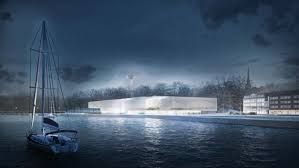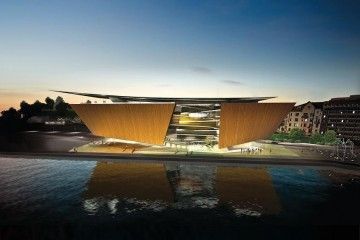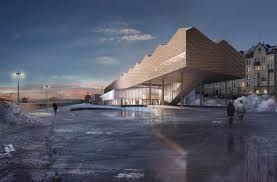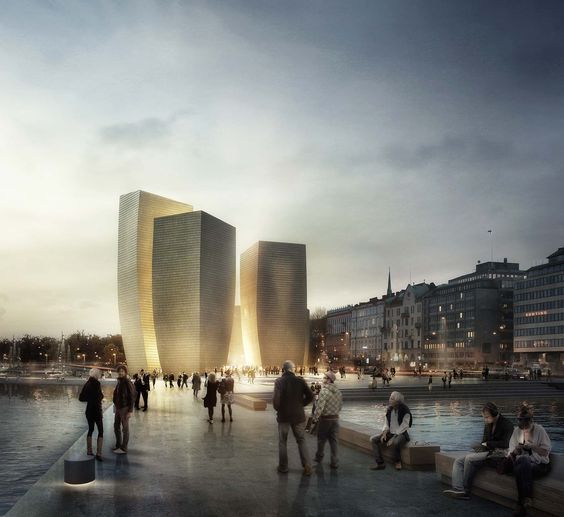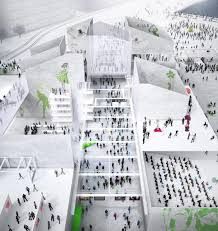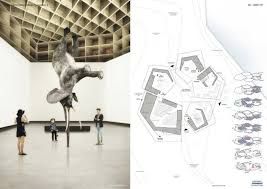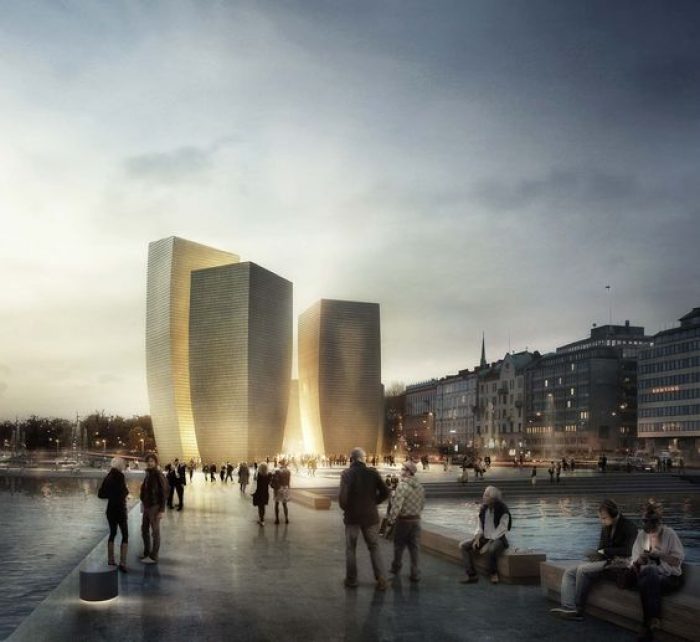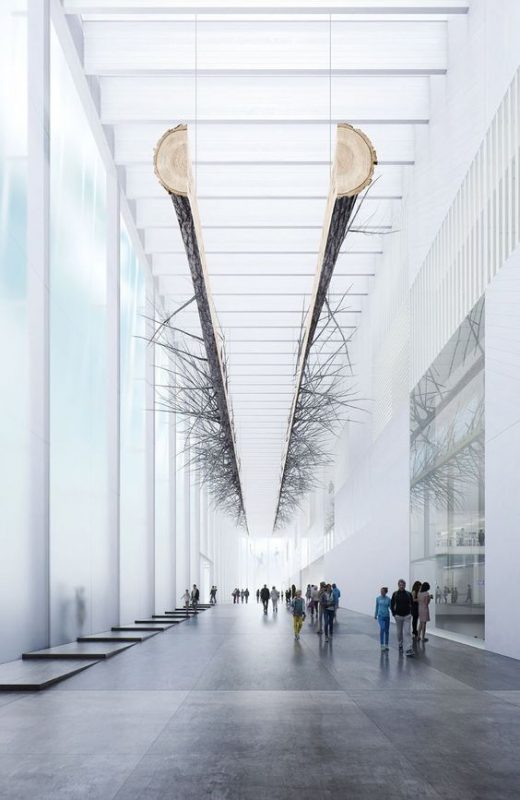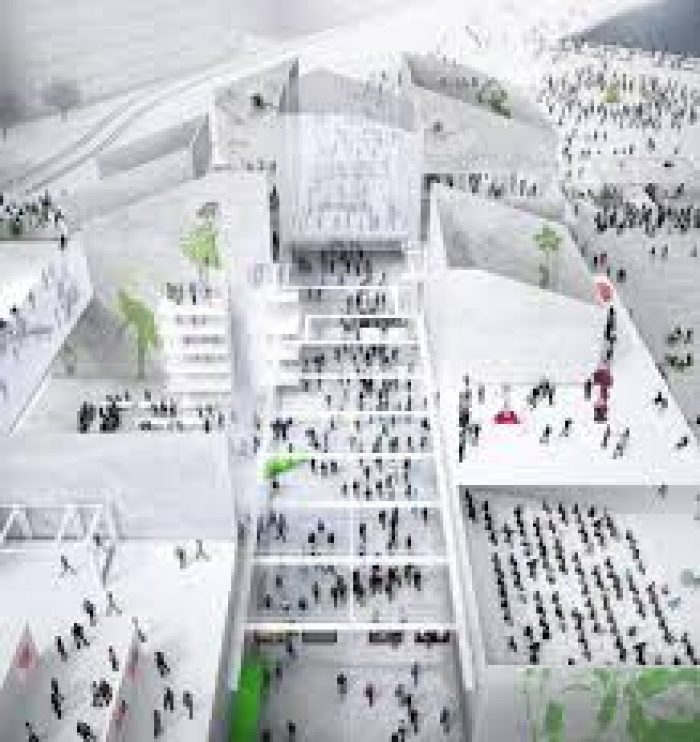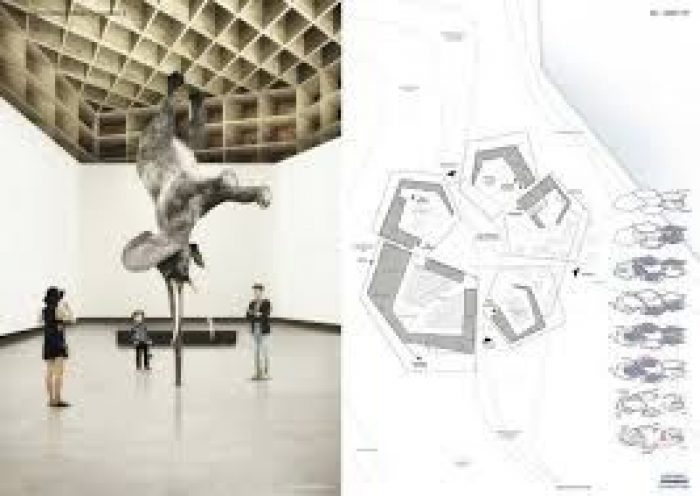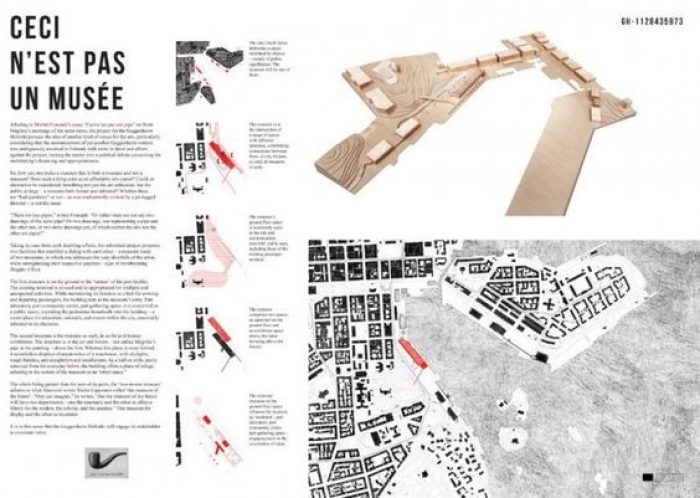An independent jury appointed by the Solomon R. Guggenheim Foundation has unanimously selected six concept designs as finalists from the 1,715 anonymous submissions to the international architectural competition for a proposed Guggenheim Helsinki, Finland. The submissions remain anonymous, as per the December announcement of the finalists, with these six architects in the running:
• Asif Khan Ltd, London
• Fake Industries Architectural Agonism, New York, Barcelona & Sydney
• haascookzemmrich STUDIO2050, Stuttgart
• Moreau Kusunoki, Paris
• SMAR – Fer Jemez, Madrid & Western Australia
The shortlisted entries represent both emerging and established architectural practices in seven countries and offer fresh and distinctive approaches to museum design and to the changing role of the twenty-first-century museum. The designs are on display until 16 May 2015 at the Kunsthalle Helsinki as part of the Guggenheim Helsinki Now exhibition. The winner of the competition for a new branch of the Guggenheim Museum in Helsinki will be announced on June 23, 2015.
The finalists propose a range of responses to the competition brief, as illustrated in the synopses below:
GH-76091181 comprises a ring of slender, sculptural towers faced with timber shingles, reminiscent of vernacular architecture, gathered around a cathedral-like central space. The towers, with their play of light and shadow, create an architectural beacon, visible by land or sea, while the central space, sheltered from extremes of weather yet part of the quayside, provides an exceptional new site for public events on the waterfront. Exhibition galleries are housed in timber cabinets stacked within the towers. Bridges connecting the towers offer respite space for visitors between experiencing art and offer new viewing points over the city and harbor.
GH-5631681770 reconfigures circulation and use of the East and West Harbors to establish an area of industrial activity and an area of cultural activity, with the museum as the link between the city and the waterfront. In a critical shift from the idea of a building as static object to a building that accommodates the flux of daily life, a city street runs through the interior of the museum, opening it to appropriation by the citizens and creating a combination of programs: a museum program and an unpredictable street program, in which visitors may become productive and creative users of the space.
GH-04380895 links the museum to the rest of the city through a pedestrian footbridge to Tähtitorninvuori Park and a promenade along the port, including a food hall and a market during the warm months. The museum programs are housed in pavilion-scale buildings treated as independent, fragmentary volumes within this landscape, allowing for a strong integration of outdoor display and event spaces with interior exhibition galleries. The ensemble is made to stand out from afar by being composed around a landmark tower. The use of charred timber in the facade evokes the process of regeneration that occurs when forests burn and then grow back stronger than before.
GH-121371443 drapes a skin of textured glass panels over a bar-like, two-story interior structure,creating an environ mentally sustainable public space between the facade and the gallery volumes, with natural light diffused throughout. In an unusual innovation, the element that makes the building sustainable—the intelligent glass wrapper, which uses technology such as Nanogel glazing and rollable thermal shutters—is also the element that distinguishes the project visually, giving the building an ethereal presence. Within the building, an annex for the work of younger Nordic artists is paired with a market hall, and a service pavilion encloses a sculpture garden.
GH-1128435973 creates two facilities in dialogue with each other. The ground floor is an adaptive reuse of the existing Makasiini Terminal, conceived as a public space that extends the pedestrian boardwalk into the building. This is a place for education, civic activity, and incubating ideas. The second floor is an exhibition hall on stilts, which hovers above the terminal building, partly removed from everyday life. The long rectangular volume offers a flexible space for all types of exhibitions and adheres to the notion of a museum as a space apart. Through this dual scheme, the proposed museum could engage its public to cocreate value and meaning.
GH-5059206475 reuses the laminated wood structure of the Makasiini Terminal to rebuild a wooden volume that exactly follows the geometry of the original, and preserves the current views from the park and the adjacent buildings. Within this structure—essentially an undisturbed network of existing conditions—the project creates 31 rooms: eight of them measuring 20 x 20 m, 18 of them 6.5 x 6.5 m, four of them 10 x 10 m, and one 40 x 100 m. This rigid set of spatial conditions is combined with a deliberate distribution of climates based on the program and principles of sustainability, with each room acclimatized independently so that the galleries together form a “thermal onion.”
Text and images courtesy of Solomon R. Guggenheim Foundation, NYC.
